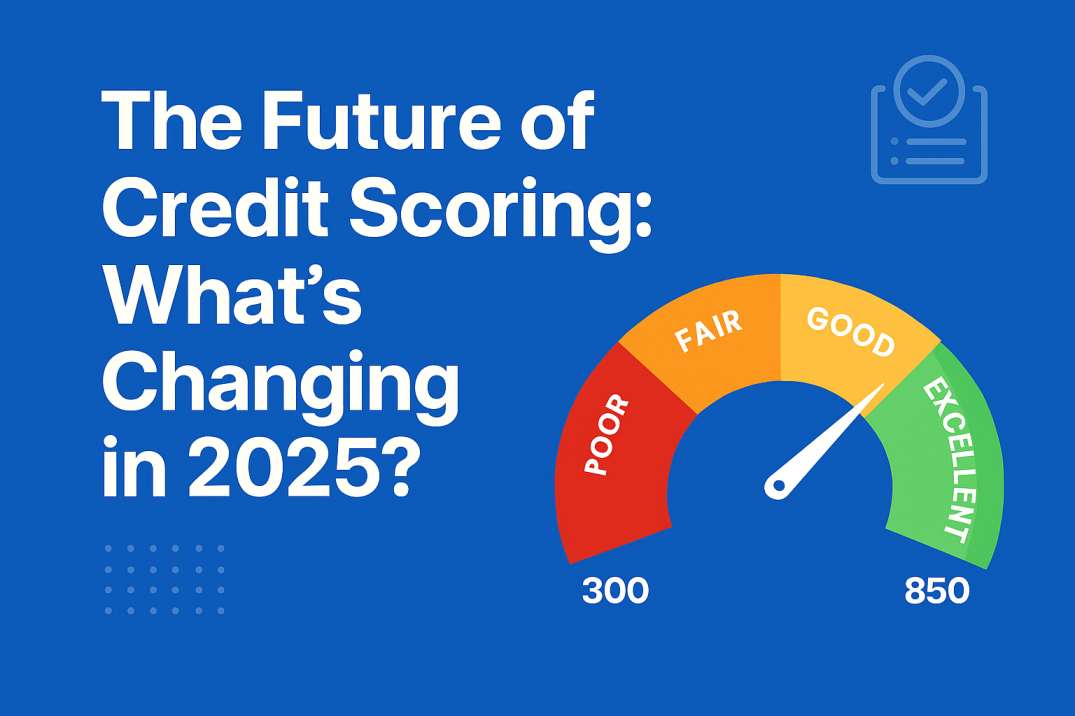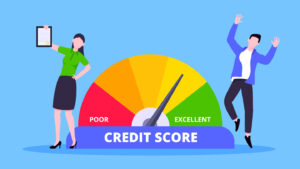Credit scores have long been the silent gatekeepers of financial opportunity—impacting everything from loan approvals to apartment rentals and even job applications. But as we step into 2025, the credit scoring landscape is undergoing a seismic shift. Driven by technology, regulatory reform, and a push for greater inclusivity, the future of credit scoring promises to be smarter, fairer, and more personalized than ever before.
In this post, we’ll explore the major changes reshaping credit scoring in 2025, and what they mean for consumers, lenders, and the financial ecosystem at large.
🔄 Traditional Credit Scores Are Evolving—But Not Disappearing
For decades, credit scores have been calculated using five core factors: payment history, credit utilization, length of credit history, types of credit, and recent inquiries. These metrics, while useful, have left millions of people—especially young adults, immigrants, and low-income earners—without a meaningful credit profile.
In 2025, traditional scoring models like FICO and VantageScore are being reimagined to include alternative data sources. These include:
- Rent and utility payments
- Streaming service subscriptions
- Mobile phone bills
- Bank account cash flow
This shift is designed to bring “credit invisibles” into the fold, offering a more accurate picture of financial responsibility beyond credit cards and loans.
🤖 AI and Machine Learning Are Redefining Risk
Artificial intelligence is no longer a futuristic concept—it’s now embedded in the very fabric of credit scoring. In 2025, AI-powered models are replacing static formulas with dynamic, real-time assessments of consumer behavior.
These models analyze:
- Spending patterns across multiple accounts
- Behavioral responses to financial stress
- Frequency of savings and investment activity
- Social and digital footprint (in limited, regulated contexts)
The result is a more nuanced and predictive credit score that adapts to your financial habits. For example, someone who consistently saves and avoids overdrafts may be rated more favorably—even if they don’t have a long credit history.
🌐 Open Banking Is Giving Consumers More Control
Open banking regulations have empowered consumers to share their financial data directly with lenders. In 2025, this means you can opt in to share your transaction history, savings behavior, and budgeting habits to strengthen your credit profile.
Benefits of open banking in credit scoring include:
- Greater transparency in how scores are calculated
- Customized credit evaluations based on real financial behavior
- Improved access to credit for non-traditional earners like freelancers and gig workers
This shift puts the power back in the hands of the consumer, allowing you to tell your financial story on your own terms.
📱 Real-Time Credit Monitoring Is the New Standard
Gone are the days of waiting for monthly updates or annual reports. In 2025, real-time credit monitoring is the norm, thanks to fintech apps and embedded banking tools.
These platforms offer:
- Instant alerts for score changes
- Personalized tips to improve your score
- Predictive analytics to forecast future credit health
- Integration with budgeting and savings tools
This proactive approach helps consumers stay ahead of potential issues, catch errors early, and make smarter financial decisions in real time.
🛡️ Ethical Scoring: Tackling Bias and Privacy Concerns
As credit scoring becomes more data-driven, concerns around algorithmic bias and data privacy are front and center. Regulators in 2025 are enforcing stricter guidelines to ensure fairness and transparency.
Key developments include:
- Auditing of AI models to prevent discrimination
- Clear disclosures about what data is used and how
- Consumer rights to challenge and correct scores
- Limits on sensitive data usage, such as social media or location tracking
Ethical credit scoring is no longer optional—it’s a requirement. Consumers are demanding accountability, and lenders are responding with more transparent and inclusive practices.
🏡 Credit Scoring for Life Events: A More Contextual Approach
In 2025, credit scoring is becoming more context-aware, especially for major life events like buying a home, starting a business, or recovering from financial hardship.
New models consider:
- Temporary income disruptions (e.g., maternity leave, layoffs)
- Medical debt and emergency expenses
- Career transitions and education investments
This approach allows lenders to evaluate creditworthiness with empathy, recognizing that financial setbacks don’t always reflect irresponsibility.
🧠 Financial Literacy Is Becoming a Scoring Factor
Believe it or not, financial literacy is starting to influence credit scores. Some platforms now reward users for completing financial education modules, attending workshops, or demonstrating responsible financial behavior over time.
This trend encourages:
- Better money management
- Long-term financial planning
- Reduced reliance on debt
In 2025, being informed isn’t just smart—it’s score-worthy.
🚀 How to Prepare for the Future of Credit Scoring
To thrive in this new era, here’s what you can do:
- Track your credit in real time using trusted apps
- Pay attention to alternative data—make sure rent and utility payments are reported
- Engage with open banking tools to showcase your financial habits
- Stay informed about your rights and how your data is used
- Invest in financial education to boost your score and confidence
The future of credit scoring is more inclusive, intelligent, and transparent—but only if you take control of your financial narrative.
✍️ Final Thoughts
2025 is not just another year—it’s a turning point in how we understand and manage credit. With smarter technology, fairer models, and greater consumer empowerment, credit scoring is finally catching up to the realities of modern life.
Whether you’re building credit for the first time or recovering from past challenges, the tools and opportunities available today are more powerful than ever. So stay curious, stay proactive, and let your financial story shine.




